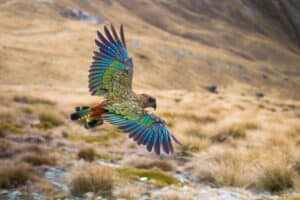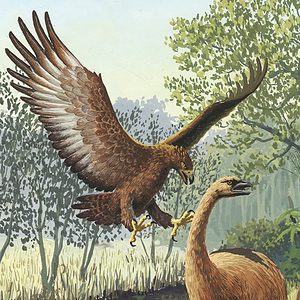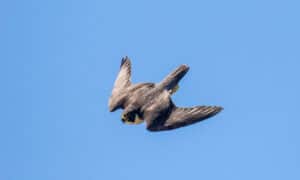Much of Ukraine is Eastern European plains with stretches of grassland and forests. Along the southwest edge of the country, you will find the billowing Carpathian Mountains. While Ukraine is not near any oceans, it does border the Black Sea and has thousands of lakes like Lake Yalpuh, the largest freshwater lake in Ukraine. Additionally, the Dnieper River flows through the middle of the country, providing habitats for a wide variety of wildlife. Ukraine provides a habitat for both native birds and migratory birds passing through to warmer locations for the winter. Ukraine honors two special birds in their country. One is the national animal, and one is the national bird.
What is the National Bird of Ukraine?
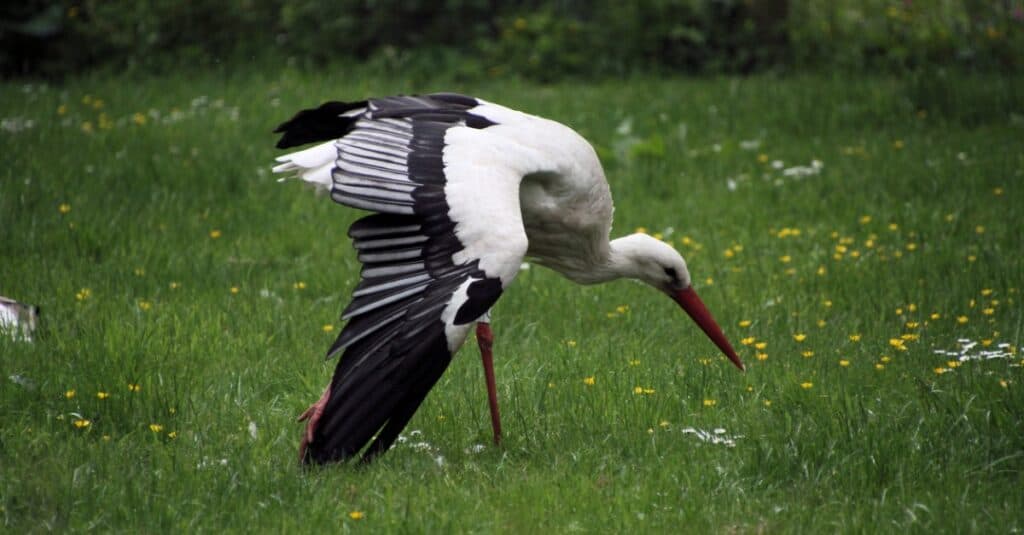
The majestic white stork is a symbol of patriotism and loyalty.
©iStock.com/Simon11uk
The national bird of Ukraine is the white stork. The majestic white stork is a symbol of patriotism and loyalty. Thousands of white storks appear in the spring, migrating back from their wintering grounds in Africa, with some flying up from South Africa (more than 5,000 miles away!). Because they have such a large range and often nest near people’s homes, storks are a familiar bird to the Ukrainian people. Citizens believe it is actually good luck to have white storks nesting on or near their home.
What is the National Animal of Ukraine?
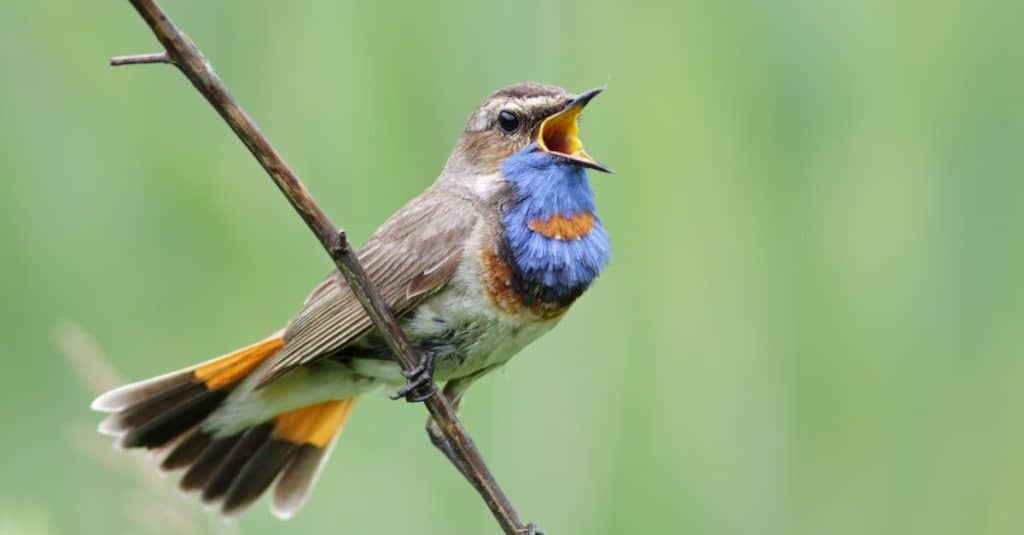
The Ukrainian word for nightingale is used as a term of endearment.
©Fidel/Shutterstock.com
The national animal of Ukraine is the common nightingale. The nightingale is a familiar songbird with a famously beautiful voice. This bird is often featured in Ukrainian folklore. Interestingly, the Ukrainian word for nightingale is used as a term of endearment. Nightingales are just a bit larger than American robins.
What does the White Stork Symbolize?
The white stork symbolizes good luck. It is also a symbol of good fortune, patriotism, and fidelity. The long-told myth that storks deliver babies started in Europe, when the arrival of thousands of storks coincided with a large number of babies being born in the spring. Parents told their children that the storks were delivering babies!
How Big are White Storks?
White storks (Ciconia ciconia) are about 3 feet tall. Some can get as tall as 40 inches, which is a little taller than your average kitchen counter. Their long spindly legs and skinny sharp beak are a brilliant red. They have white feathers, with black tips on their wings and tails. It is an impressive sight to see a group of white storks flying overhead with wingspans of 5-7 feet!
Are White Storks Endangered Animals?
No, white storks are not endangered animals. The IUCN assessed them in August of 2016 and found healthy populations across Europe, Africa, and southwest Asia. In fact, the report indicates that the population is increasing, though some places have a limited number of nesting areas. The roofs of many new rural buildings are not suitable for large white stork nests, which is causing some habitat loss. But on a global scale, the white storks are thriving. They are a species of “Least Concern”.
How Big is a White Stork’s Nest?
White stork nests can be 2 ½-5 feet wide! The largest nests are as wide as a ping-pong table! Frequently you will find colonies of these birds living in the same area with multiple nests in one tree. Typically, pairs of storks live in one nest together and return to the same nest year after year. They build their nests with large sticks and branches. Interestingly, smaller birds like starlings and sparrows will make their nests between the branches.
How Long do White Storks Live?
White storks can live 30 years or more. They begin breeding when they reach the age of 3-5 and typically stay with the same mate for years. Ukrainians that are lucky enough to have one nest on the roof of their house can expect the same ones to return year after year.
Is the National Bird on the Ukrainian Flag?
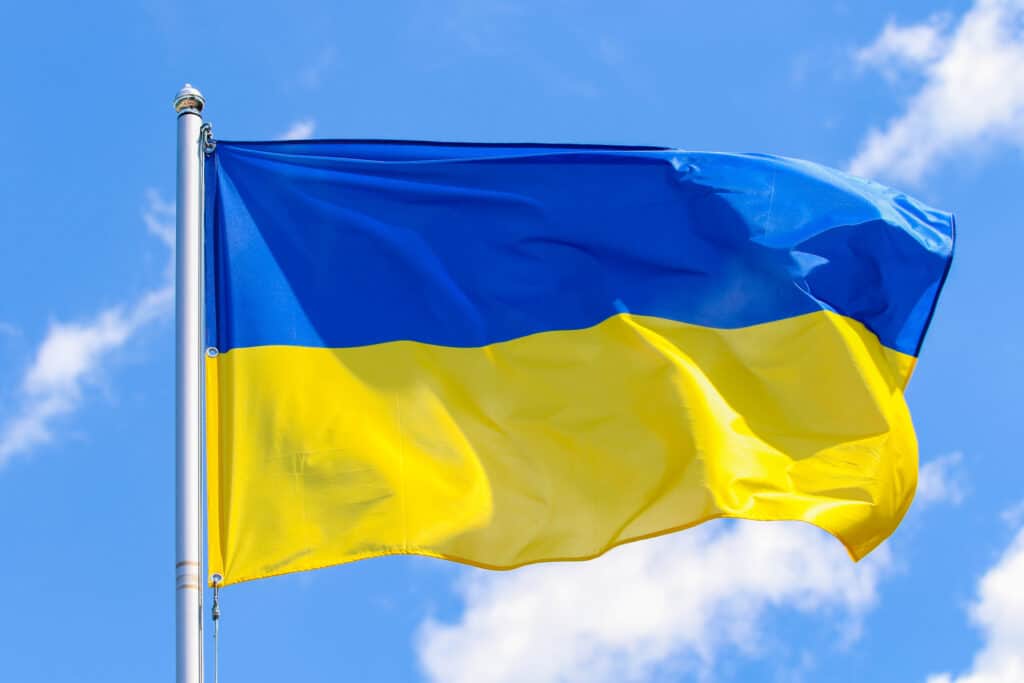
The flag of Ukraine does not feature any symbols or animals, not even the national bird.
©iStock.com/olegda88
No, the national bird is not on the Ukrainian flag. The flag does not have any symbols on it; the top half is blue and the bottom half is yellow. The bicolor flag was officially recognized on January 28, 1992. National Flag Day in Ukraine is on August 23, with the Independence Day of Ukraine the following day on August 24th.
Is the White Stork Featured on the Ukrainian Money?
No, Ukrainian money, or the Ukrainian hryvnia, does not feature the white stork. The coins feature the Ukrainian Trident, Coat of Arms, or prominent people in history like Volodymyr the Great of Kyiv and Yaroslav the Wise. The banknotes feature famous people on the front and historic places on the back, like the Lviv Theater of Opera and Ballet and the Entrance Tower of Lutsk Castle.
What Other Animals Live in Ukraine?
With the varied habitats in Ukraine, a vast variety of animals call the country home. Ukraine has many of the same animals you may find in the plains throughout the United States. Animals like deer, fox, owls, rabbits, elk, badgers and eagles are some of the most common. Some of the national parks are sanctuaries for animals and migratory birds. The Pryazovskyi National Nature Park has a population of great egrets. Great egrets are about the same height as white storks but not as heavy.
The Black Sea is a saltwater sea, but it is not as salty as the ocean. Some marine animals, like crustaceans, a wide variety of fish, and mammals, have adapted to the salt levels of the Black Sea. Examples of marine life found here include bottlenose dolphins, mackerel, anchovy, herring, tuna, and white sturgeon. You will also find jellyfish, scallops, mussels and crabs.
Are there Sharks in the Black Sea off the Coast of Ukraine?
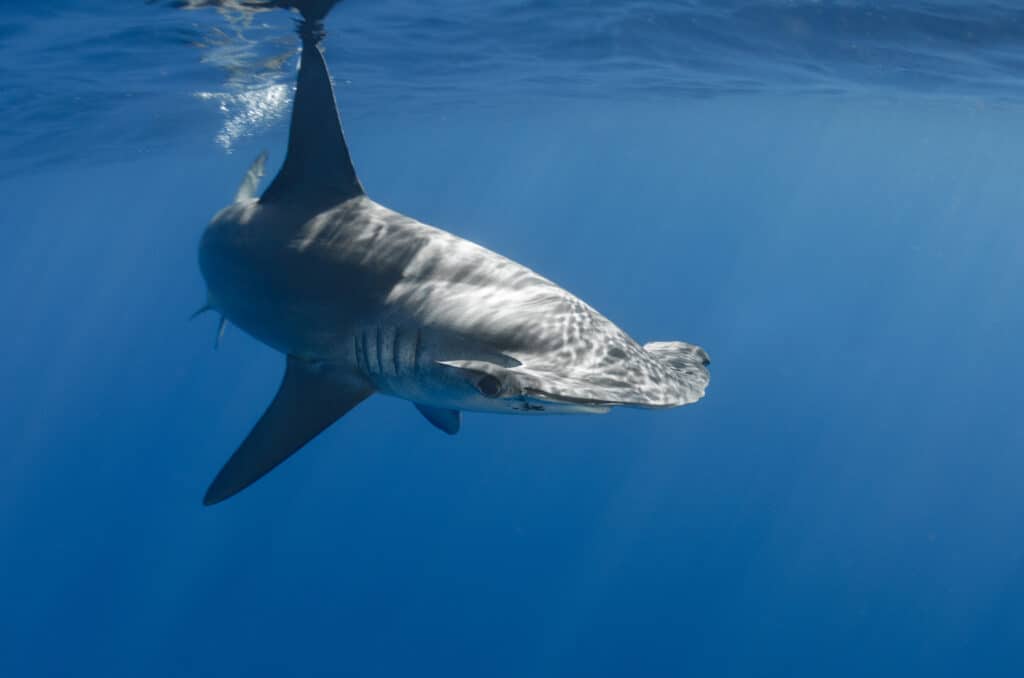
The smooth hammerhead shark can be found off the coast of Ukraine.
©iStock.com/Michael Zeigler
Yes! Several species of sharks inhabit the Black Sea. Sharks like the spiny dogfish, angel shark, thresher, and smooth hammerhead all live in the waters of the Black Sea.
Do White Storks Visit the Black Sea?
Yes! In August you can find large populations of white storks along the edge of the Black Sea, especially in Bulgaria. They find this location a fine stop over on their migrations south. The Bulgarian people also value the majestic white stork. It seems this bird garners respect and admiration wherever it goes.
Up Next
- Crane vs. Stork: What are the Differences
- Discover the Heroic Animal Evacuations from Zoos in Ukraine
- The Ukrainian Flag: History, Meaning and Symbolism
The photo featured at the top of this post is © Ian Duffield/Shutterstock.com
Sources
- britannica.com, Available here: https://kids.britannica.com/kids/article/stork/353816
- IUCN Redlist, Available here: https://www.iucnredlist.org/species/22697691/86248677#geographic-range
- Britannica.com, Available here: https://www.britannica.com/animal/ciconiiform#ref1247184
- Whitestork.org, Available here: http://whitestork.org/index.php/white-stork/
Thank you for reading! Have some feedback for us? Contact the AZ Animals editorial team.



